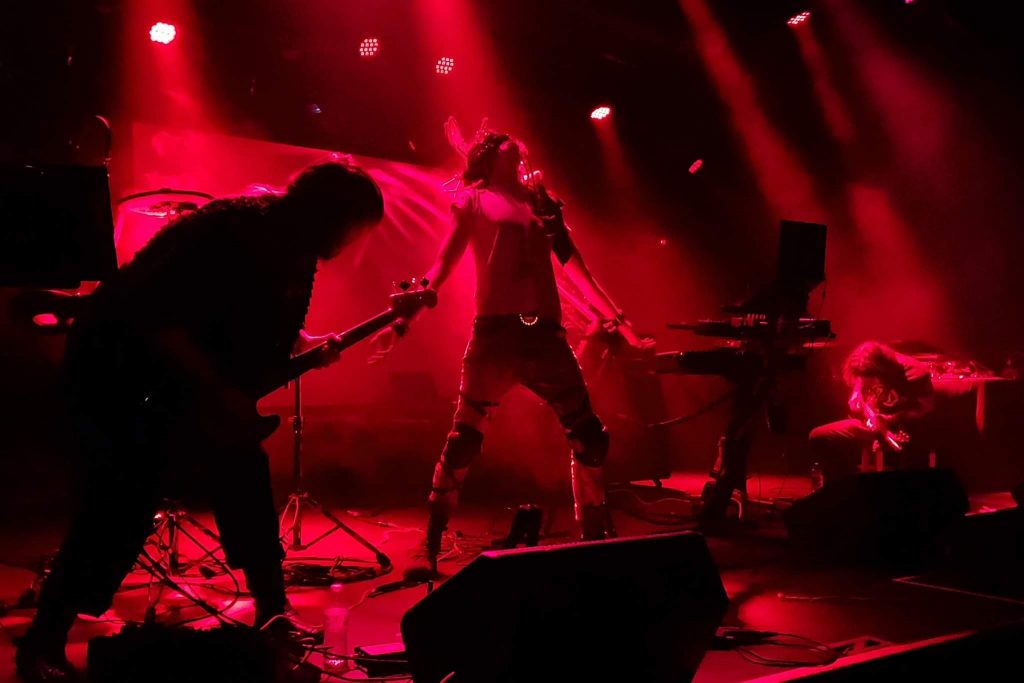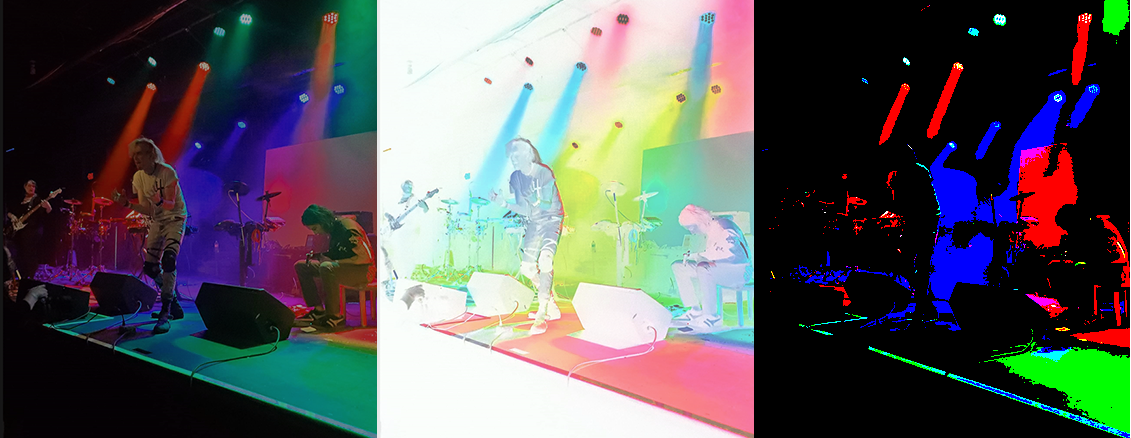By Keith Walsh
Nahja Mora began as a project between two intimate friends, playing art galleries around Maryland. Yet their new release, AHFHAOTA, is marked by the loss of Hobart Blankenburg, leaving vocalist Josef Saint to finish the project.
Expressionism is what Nahja Mora is all about. The music functions as catharsis for creator and listener both, with a release from mental anguish overlaying the form and structure. In an email exchange, Saint told me about his workflow: “My compositional strategy is kinda free-for-all” he writes, “and comes down to the idea of ‘no mind’ in playing. I enjoy jamming and improvising. I have also been programming music on computers my whole life and I love machine-rhythm and things off-beat but looping. And I especially like the combination of spastic non-human changes– and how that can interact with human playing. Music is a language and I wanted to communicate something very dire with sound.”
Experimentation is at the heart of the unique sound of AHFHAOTA. Saint writes: “Techniques used include extended-playing, prepared things, found objects, polytonality, serialism… dissonance. My programming and playing is not typically in song-form.”
“I especially like the combination of spastic non-human changes– and how that can interact with human playing. Music is a language and I wanted to communicate something very dire with sound.”
Josef Saint Of Nahja Mora
And though Saint, a classically trained pianist who once played improvised piano at art galleries, admits he ‘abhors” talking about gear, he kindly answered a couple obligatory questions about equipment. “My favorite synthesizer is probably the Yamaha SY77 or the Yamaha DX7mkII-FD,” he writes. “They are my favorites because of their sound and their programming process makes sense to my way of thinking. The SY77 is incredibly powerful and I am lucky to own a Waveblade and programmer so that I can load my own samples into the synthesizer and insert them into the FM engine. My favorite VST instrument is Pianoteq by Modartt.” Saint used Ableton to record the album.
Solidarity Via Soundwaves
AHFHAOTA “is meant to elicit a feeling of madness,” writes Saint. In the spirit of May being Mental Health month, it’s apropos that he got some help from his collaborators in making the album, which he used as catharsis to grieve the loss of his friend. “This album was a collaborative effort with Jenny Rae Mettee (cello, fretless bass, electric guitar, synths), Jeff Byers (guitar), Hobart Blankenburg (synth and sampler), and Shawn Brice (synths).” Guest vocals are by Lilith Astaroth, and Saint plays does vocals, percussion, synthesizers, and fretless bass and electric guitar throughout.
“This album is a story of someone already falling apart trying to get better only to fall apart all over again,” Saint explains. “Whenever any musician plays with feeling they prescribe their soul into the work as a writer of any part does it just as much. We all bleed when we create to impress something ‘real’ into a work. That was the mission here: expression of extreme mental distress,”

Saint continues: “I programmed, played and sculpted sound into the direction of the idea. I then started cutting things around a central idea and removing pieces. I then started adding different sounds and textures and colours. I then brought my bandmates into the fold to add parts as they wanted after explaining the meaning of the track in the story as a whole. This album was produced with intent around each song as part of the story and the idea was for it to be listened to as a whole.”
The single “Ash World Grey” is probably the most melodic track on the album, emerging out of the industrial/darkly dreamlike noise of other tracks, as a kind of cousin to Nine Inch Nails. “Give Way To Shadow (Relapse)” is another melodic contender, landing close to something not unlike a Depeche Mode ballad. “Scatter” is another tune with echoes of Depeche Mode, despite being more aggressive and experimental in nature.
The track “down.” is like a Kraftwerkian bad trip, while “Summary Vile” starts out that way until it descends into even bleaker sonic terrain. Through all of its theatrical darkness, with AHFHAOTA, Saint and his Nahja Mora collaborators succeed in creating an essentially unique and challenging experience, mirroring the chaos of madness very effectively.
Nahja Mora dot com
Nahja Mora on Bandcamp
Nahja Mora on Facebook
Nahja Mora on Instagram
Precision Field on Bandcamp
AHFHAOTA on Punkrockbeat.com
finis
